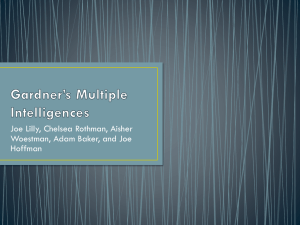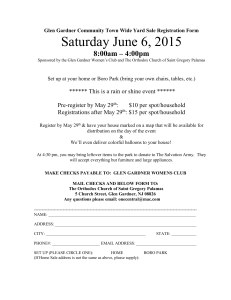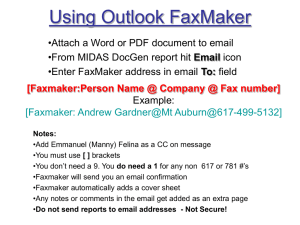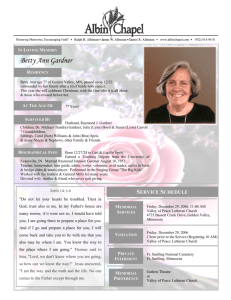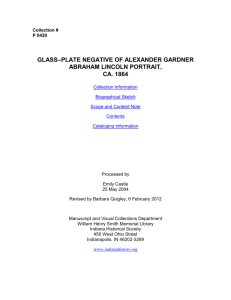Alexander Gardner Bio - Tonganoxie Public Library
advertisement
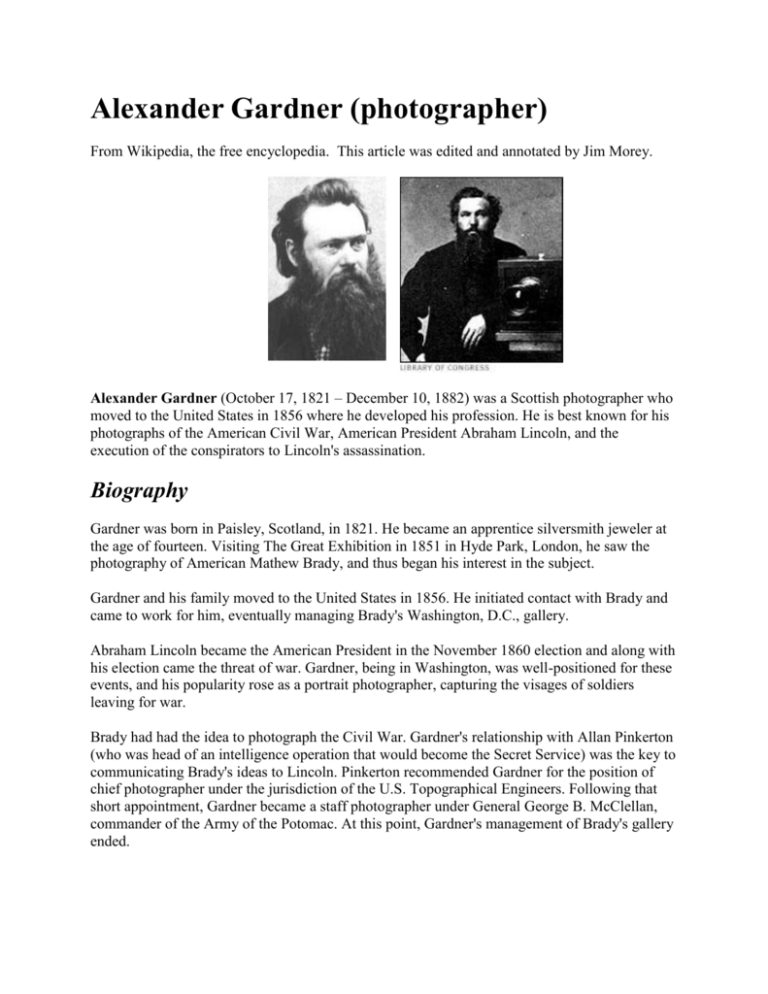
Alexander Gardner (photographer) From Wikipedia, the free encyclopedia. This article was edited and annotated by Jim Morey. Alexander Gardner (October 17, 1821 – December 10, 1882) was a Scottish photographer who moved to the United States in 1856 where he developed his profession. He is best known for his photographs of the American Civil War, American President Abraham Lincoln, and the execution of the conspirators to Lincoln's assassination. Biography Gardner was born in Paisley, Scotland, in 1821. He became an apprentice silversmith jeweler at the age of fourteen. Visiting The Great Exhibition in 1851 in Hyde Park, London, he saw the photography of American Mathew Brady, and thus began his interest in the subject. Gardner and his family moved to the United States in 1856. He initiated contact with Brady and came to work for him, eventually managing Brady's Washington, D.C., gallery. Abraham Lincoln became the American President in the November 1860 election and along with his election came the threat of war. Gardner, being in Washington, was well-positioned for these events, and his popularity rose as a portrait photographer, capturing the visages of soldiers leaving for war. Brady had had the idea to photograph the Civil War. Gardner's relationship with Allan Pinkerton (who was head of an intelligence operation that would become the Secret Service) was the key to communicating Brady's ideas to Lincoln. Pinkerton recommended Gardner for the position of chief photographer under the jurisdiction of the U.S. Topographical Engineers. Following that short appointment, Gardner became a staff photographer under General George B. McClellan, commander of the Army of the Potomac. At this point, Gardner's management of Brady's gallery ended. The honorary rank of captain was bestowed upon Gardner, and he photographed the Battle of Antietam in September 1862, developing photos in his horse drawn traveling dark room shown here. Gardner worked for Brady from 1856 to 1862. According to a New York Times review, Gardner has often had his work misattributed to Brady, and despite his considerable output, historians have tended to give Gardner less than full recognition for his documentation of the Civil War.[1] Among Gardner’s photographs of Abraham Lincoln were some of the last to be taken of Lincoln, allegedly four days before his assassination, although this timeline was later contested. The famous Gardner photograph of Lincoln, to the right, is known as the “cracked plate” Lincoln portrait. Gardner documented Lincoln's funeral, and photographed the conspirators involved (with John Wilkes Booth) in Lincoln's assassination. Gardner was the only photographer allowed at their execution by hanging, photographs of which would later be translated into woodcuts for publication in Harper's Weekly. The Tonganoxie-Gardner Connection After the Civil war Alexander Gardner was commissioned to photograph Native Americans who came to Washington to discuss treaties; and in 1867 he photographed the proposed route of the Kansas Pacific railroad to the Pacific Ocean. It was during this time that Gardener came to Tonganoxie.

